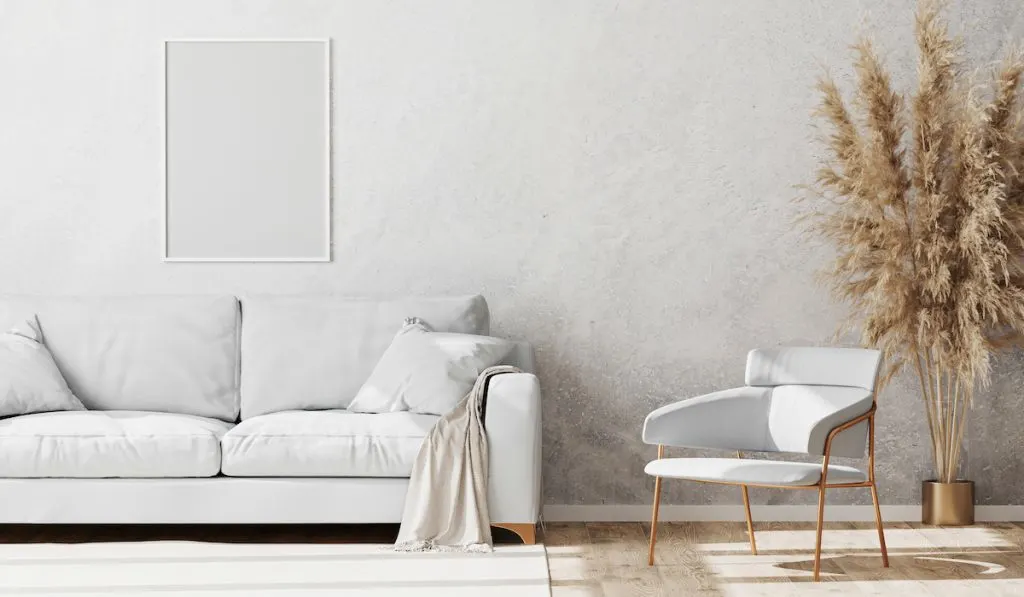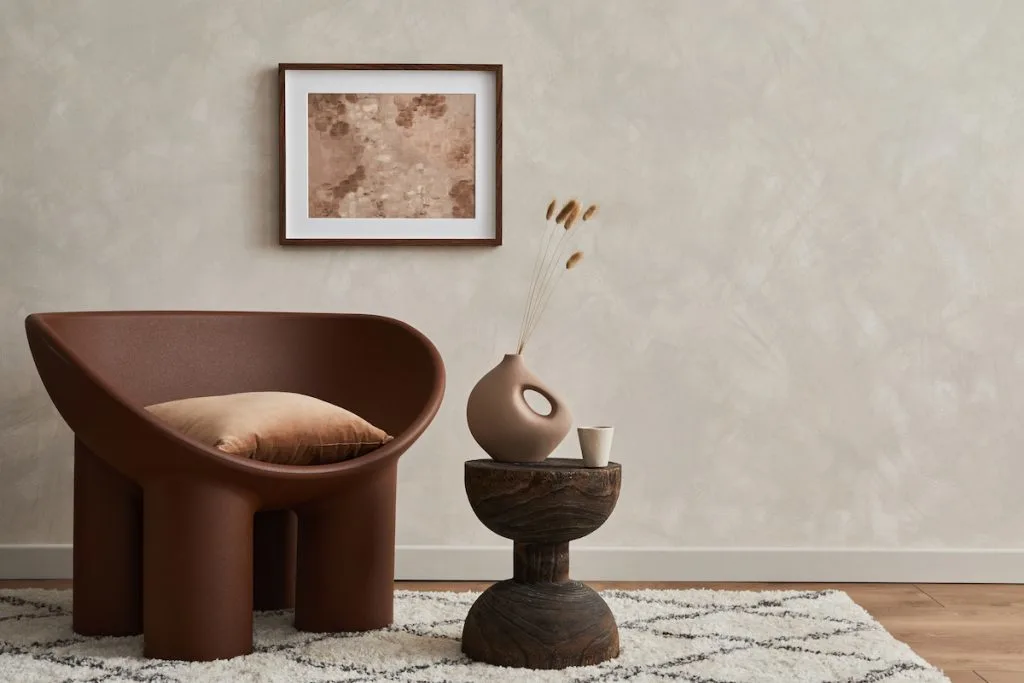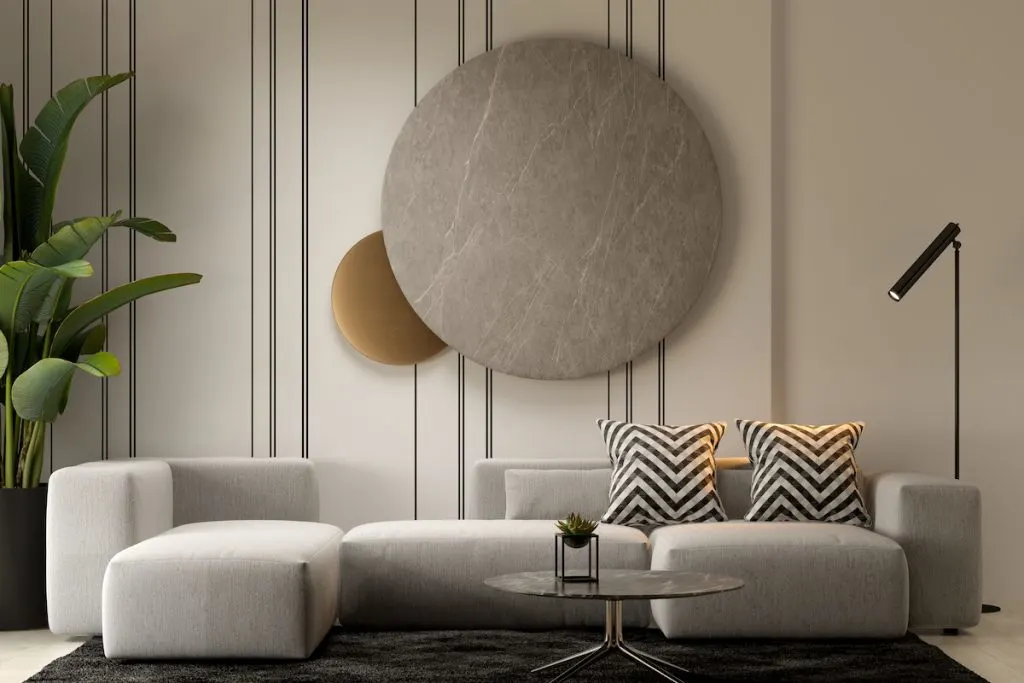You know minimalist interior design when you see it, but if you had to describe it, what would you say? Other than, “Not a lot of stuff,” or “no clutter.” How can you verbalize what it is?
A lot of people, when they move into a new place, buy a home, or want to redesign a living space, have trouble explaining the look they want.
They know what they like when they see it in a magazine or some other home listing, but when it comes to picking out pieces and putting together a cohesive design throughout the home, things get tough.
Minimalist interior design has been en vogue for decades.

It’s gone through a bit of an evolution, but many of the basics and features of minimalist interior design remain.
At its very base, minimalism is just that, minimalist.
It means few colors, few prized items, good spacing, and other elements that come together to create something amazing.
It’s a lovely style that fits any type of space.
Whether you’re a homeowner or designing an office space, the minimalist design evokes a luxury aesthetic that promotes serenity and creativity.
If you’re interested in building your home into something unique with minimalist design by yourself or you want to explore different options before you meet with a designer, knowing what constitutes minimalist interior design will help you know how to explain what you like.
It will guide you as you purchase furniture items, paint, and even arrange floor plans.
Here are 9 key features of minimalist interior design.

1. Shapes Are Important
Minimalist design isn’t just about something’s size or how many of a thing you have in your apartment.
It also has to do with how you will process what’s in the room and how it makes you feel.
Minimalism pays attention to the shape of tables, chairs, hallways, and other architectural designs.
It emphasizes clean lines and flat surfaces. When things curve, they do so smoothly.
While it’s perfectly fine to have one or two complicated pieces in a home to spice up a room, most of the time you’re talking about clean lines and items that meld into one another nicely.
2. Minimalist Design Includes Colors!
Most of the time, dull colors and earthy tones are part and parcel of minimalist interior design.
You’ll see a lot of natural cement colors and flat whites. Hues of green, brown, blue, are also very common.
Again, minimalist design doesn’t mean that having any trace of bright color isn’t allowed.
It’s more of a statement of proportion.
You can have a single brighter wall in a guest room or behind the master bed, but for the most part, things should be calm, cool colors to fit the minimalist mold.
The high-profile minimalist homes you’ll see on tv or spotlighted in magazines almost always are monochrome or have only one paint color throughout the entire house.
If you’re changing things up in your residential or commercial space, or you’re designing a new place, it’s a good idea to opt for strict adherence to uniform colors.
Instead of an accent wall, use something like a painting or a bright plant pot to add the color and build from there.

3. Minimalist Spaces Are Balances Spaces
There is a focus on balance in minimalist spaces that other interior design themes don’t follow.
You’ll see a lot of right angles in the placement of couches and chairs in sitting areas, for example, and a plant in one corner will be balanced by an area lamp in another.
4. Minimalists Love to Own a Few High-End Pieces
Because minimalist interior design typically means fewer things in a kitchen, bedroom, bathroom, or conference room, you can pay more attention to the chairs, tables, beds, and fixtures that go in them.
While some minimalists try to shed as many possessions as they can, part of minimalist interior design is a strong emphasis on quality over quantity.
People who love interior design want to buy and install pieces that draw attention themselves.
Instead of buying something functional and using blankets, pillows, throws, and other items to spruce them up, the basic item speaks for itself.
If you are in a minimalist space, you should ask the owner about different items in the room.
There’s likely an interesting story about where it came from, who made it, and why they acquired it.

5. Everything Is Intentional
Minimalist interior designers and their clients don’t make room for legacy items or “find a place” for something.
There’s no room for any of that.
In minimalist spaces, every detail is intentional. Every corner table and every plant is in its place for a reason.
All items contribute to the overall balance and theme. There are no afterthoughts. The thinking is that every piece should have a connection to the room.
If something doesn’t contribute to the whole, it’s removed.
6. Go for Textures Over Patterns
Patterns, like wallpaper or prints on chairs and couches, often detract from a minimalist theme.
They make a room look busy and distract from all of the efforts you put into making clean lines and establishing order in a room.
Instead of patterns, opt instead for a different texture or something more subtle if you feel like a room needs a bit more.
You can find ways to texture cement or buy a textured rug that’s a bit thicker. Anything wood with nice wood grain is also a nice choice.
7. Minimalist Homes and Offices Capitalize on Sunlight
If you have an opportunity to go into a nicely-decorated minimalist home, you should notice that there is plenty of natural light inside.
A big part of minimalist interior design is maximizing natural light.
More light highlights the pieces in a room and makes things inside feel more open and fluid.
Higher light levels also create a feeling of sophistication.

8. Basic Kitchens Are a Major Feature
Kitchens, like they are in almost every home, are a big part of this type of interior design. In minimalist kitchens, you’ll rarely find things like pattern granite countertops or wooden cabinets.
Most of the time, you’ll see marble or quartz countertops with smooth surfaces. There is a lot of white in most minimalist design kitchens.
While cabinets, walls, and counters are usually offset by wooden chairs or tables. You’ll rarely see crowded countertops and ornate kitchen islands.
9. Curation Is Key
Of course, not everyone wants to throw away all of their old stuff or can afford to fill an entire space with high-end items.
A feature of minimalist interior design is a focus on quality and building the space you want with meticulous curation.
It’s all about adding important pieces bit by bit and eliminating the extras in a process that can happen all at once or take years to build.
Attention to detail is the most important thing, and creating a space where you feel a special connection to every item no matter how large or how small.
Everything is in order, arranged in neat lines, and contributes to the color scheme.
